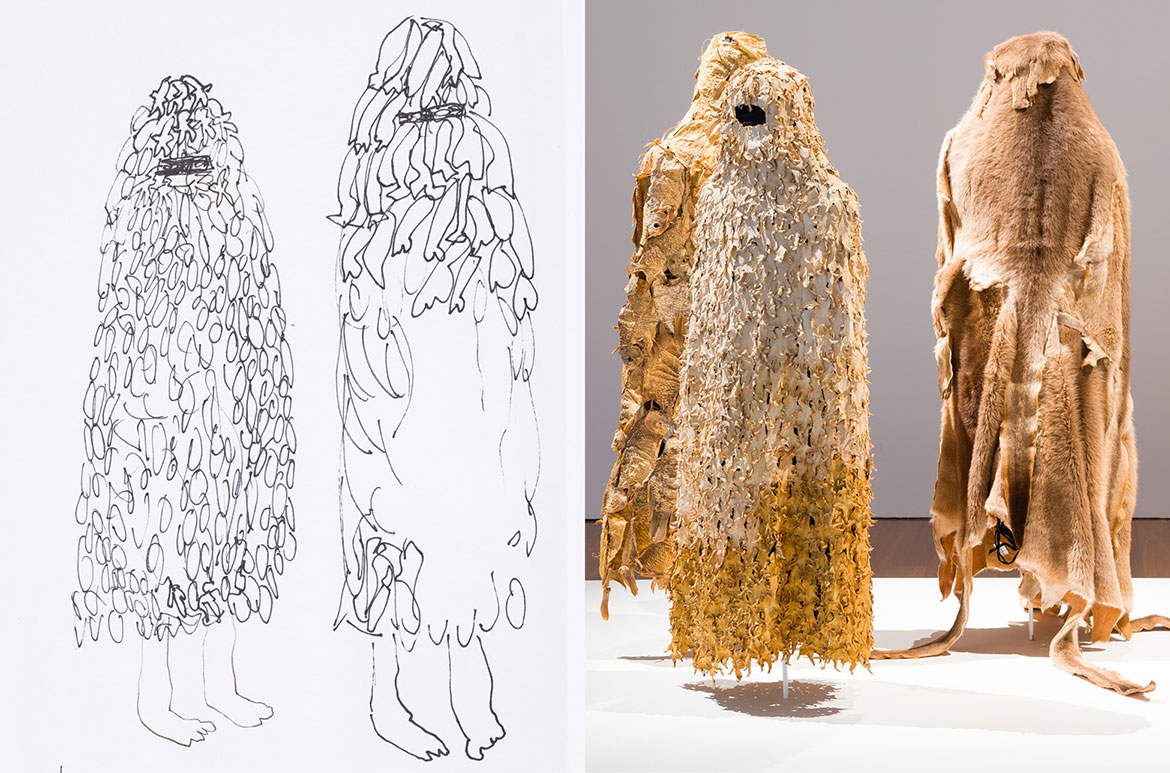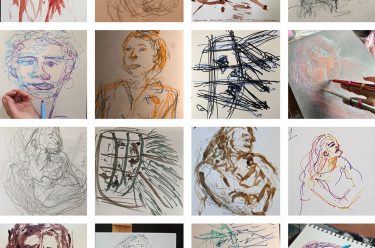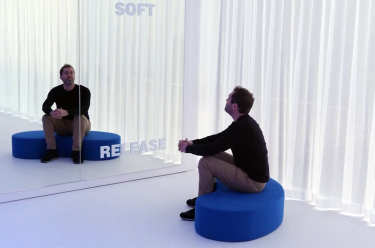A frog skin is one of the fascinating and surprising items collected by the QAGOMA Research Library, and can be found specifically in the file of Mella Jaarsma, the Netherlands-born artist living in Indonesia. The skin accompanies the preliminary sketches for her ‘The Third Asia Pacific Triennial of Contemporary Art (APT3) proposal, Hi inlander 1999, the work acquired by the Gallery in 2000.
Proposal for ‘Hi inlander’


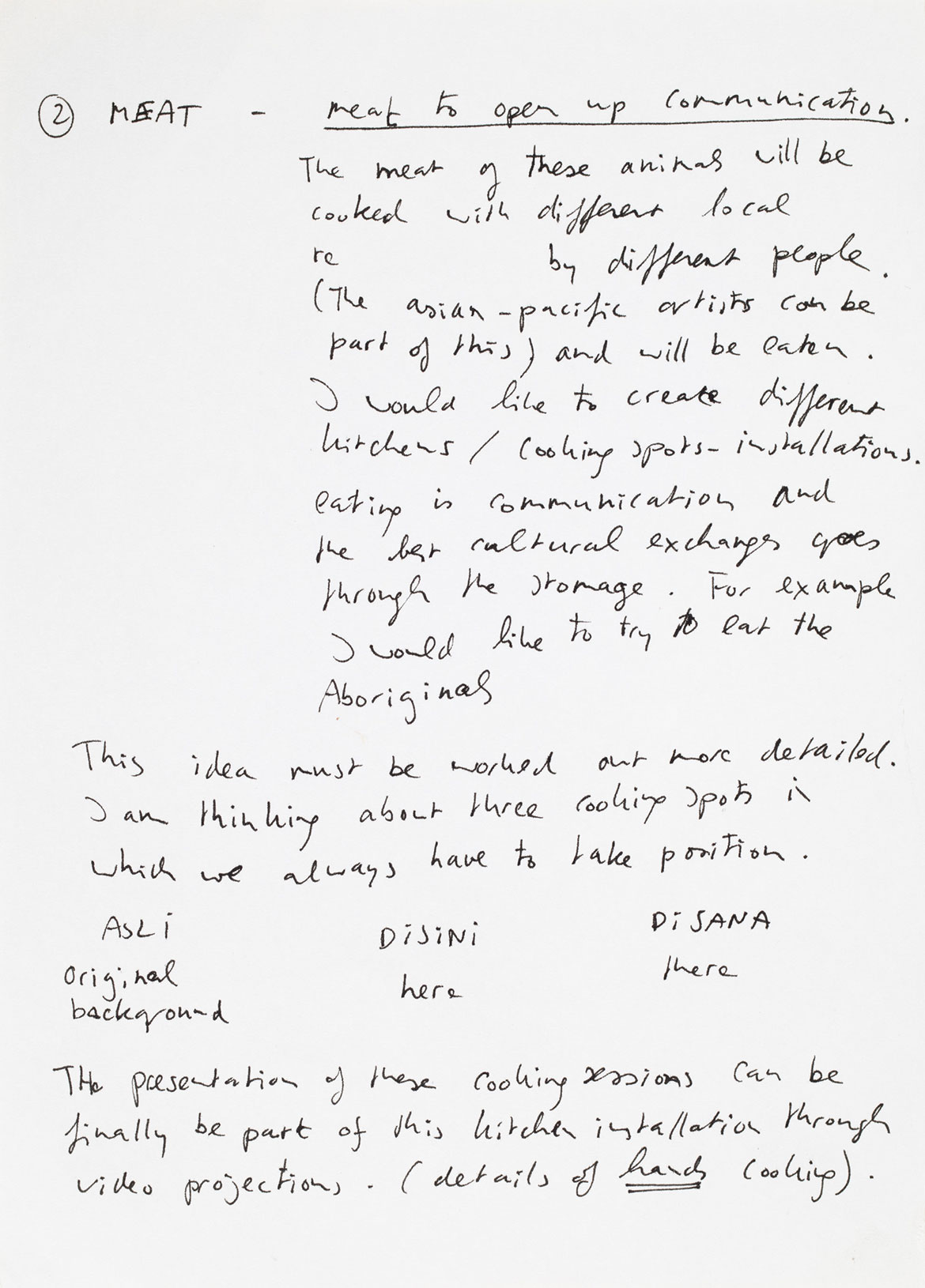
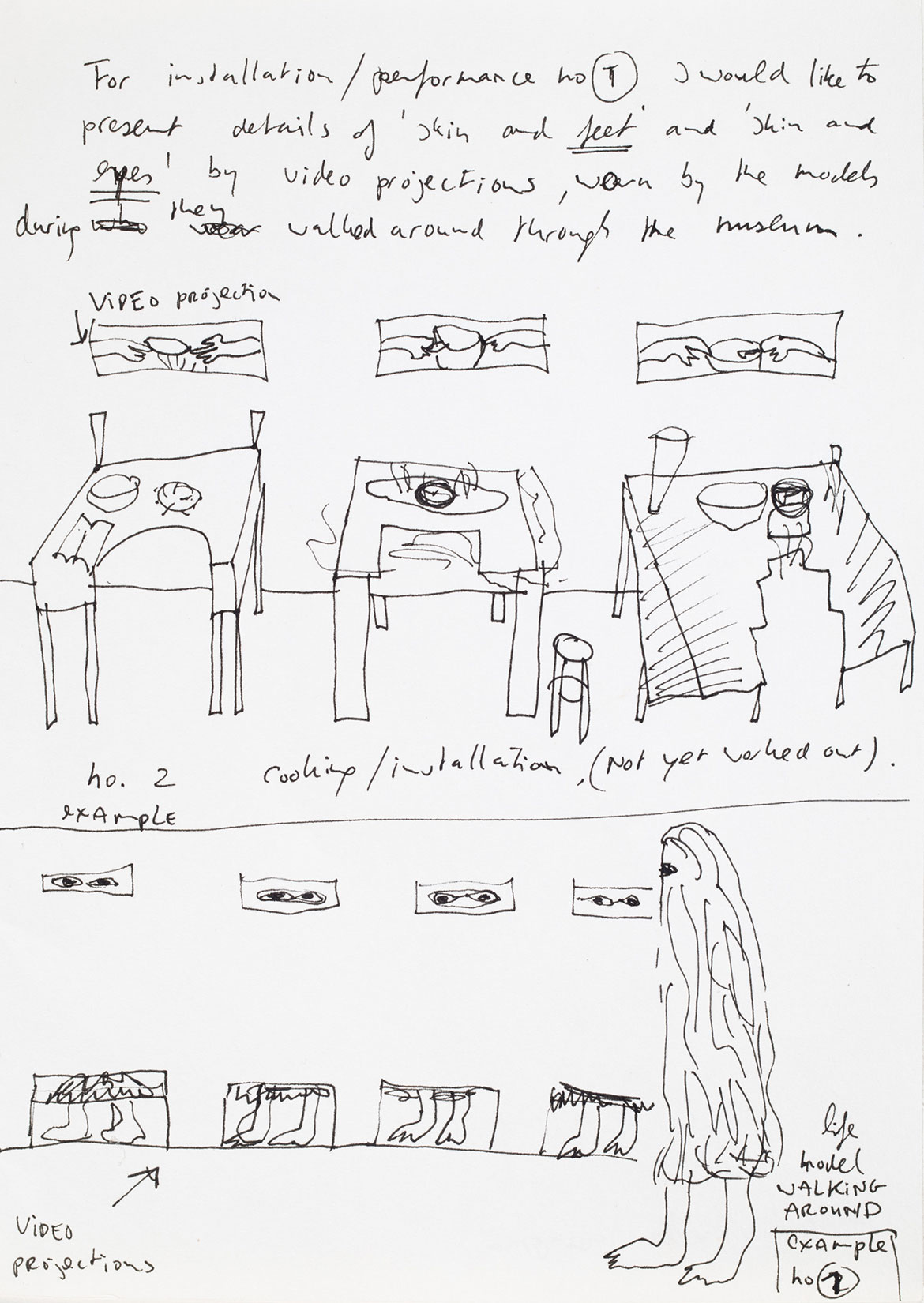
The Research Library collects a range of material on artists from QAGOMA’s Collection and exhibitions, holding thousands of files on artists from Queensland, within Australia, and including the Asia Pacific region. This treasure trove of ephemera, photography, correspondence and curiosities are an important resource which can provide insight into the artists’ creative processes and their history of engagement with the Gallery.
In this work, Mella Jaarsma takes up the issues of social location and difference in their most radical and irreducible form. Through Hi inlander (Hello native), Jaarsma asks: What does it mean to walk around in another’s skin, to see through their eyes, to make food with their hands, to eat their food and to become, therefore, like them? More acutely, what does it feel like to live in another’s body? Does a different body make a different person?
Mella Jaarsma ‘Hi inlander’ 1999

The title of the work underlines these interrogative meanings: ‘Hi inlander’ was a colonial Dutch greeting to indigenous Indonesians, derogatory in its implications of their colonised status.
The ‘second skins’ in Hi inlander come from Javanese gurami fish, frog skins, chicken skin and feet, and kangaroo hides sourced commercially by the artist. They cover the body from head to shin, resembling a jilbāb, the Muslim woman’s veil – a traditional mark of Islamic belief much debated in recent years, and undeniably a mark of difference.
Mella Jaarsma ‘Hi inlander’ 1999

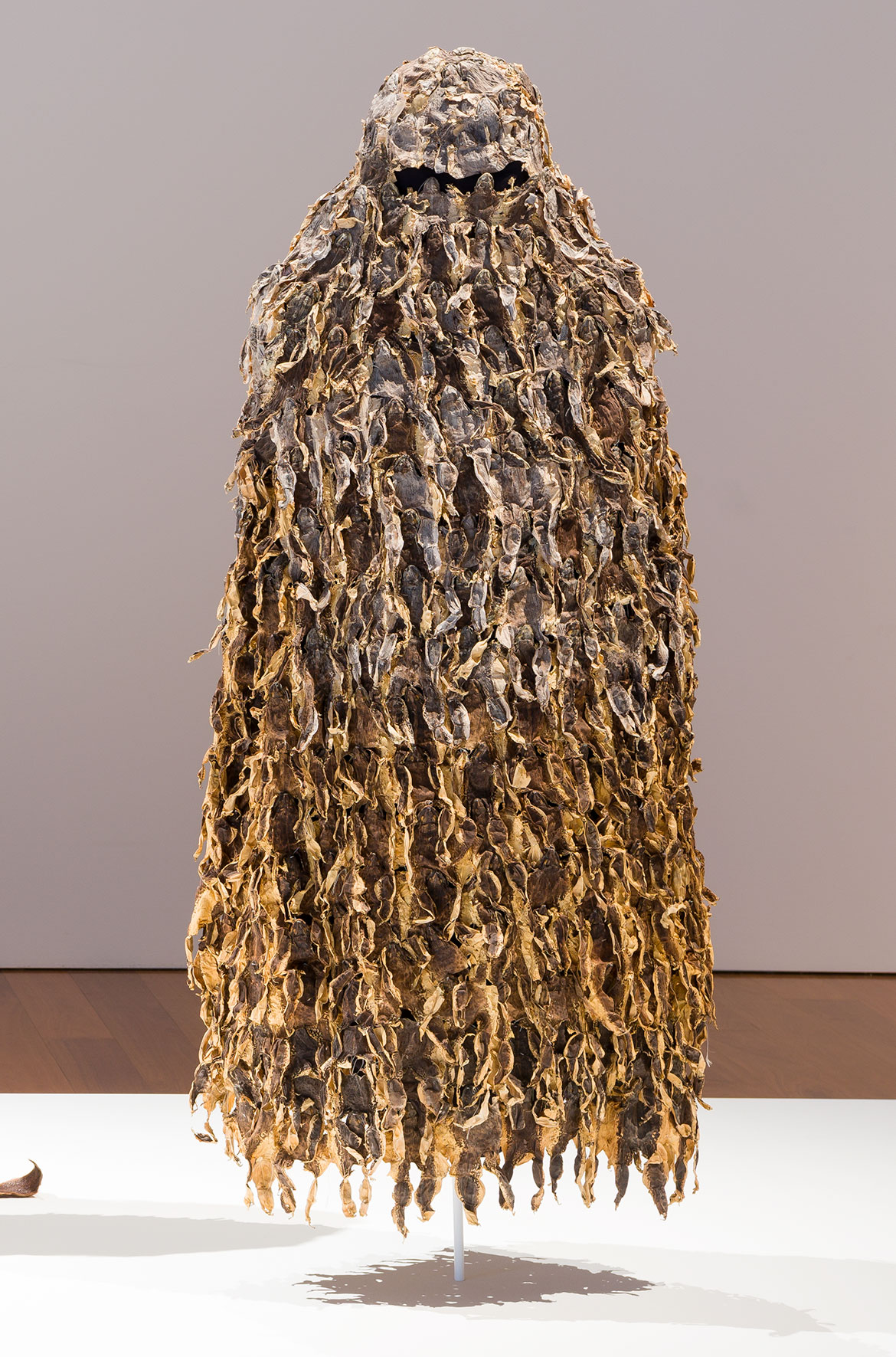
As part of the artwork, these skins were worn by performers who mingled with visitors during the opening night and weekend of ‘APT3’, their eyes and feet only visible. The eyes permit social contact and interaction, and despite ethnic, age and cultural difference, are the common expressive tools of all humanity.
The meat of the same animals that provided skins for these jalabib, were cooked on three contemporary Indonesian stoves, the material of each – stone, tiles, zinc – corresponding with a particular social status.
Hi inlander recognised the diverse customs and foods that constitute human societies. Crucially, Mella Jaarsma’s work insists that we must accommodate differences rather than despise them for social harmony to be a reality.
Watch | Mella Jaarsma performance
Gallery visitors cook and share food with each other
QAGOMA Research Library
The QAGOMA Research Library is located on Level 3 of the Gallery of Modern Art (GOMA). Open to the public Tuesday to Friday 10.00am to 5.00pm. visit us in person or explore the online catalogue. Access to special collections is available by appointment.
Jacklyn Young is Librarian (Collections), QAGOMA
Featured image: Preliminary sketches for Hi inlander 1998 and the work
#QAGOMA
